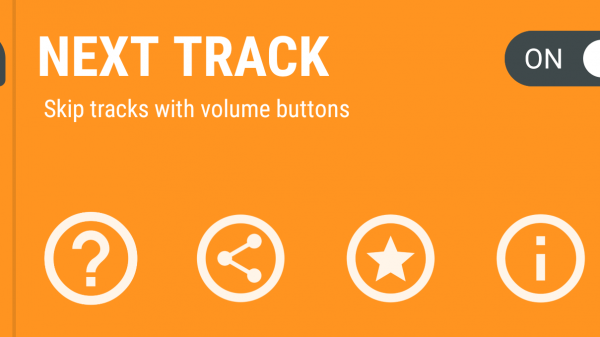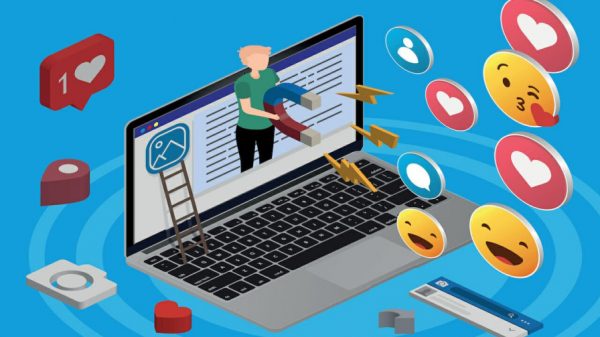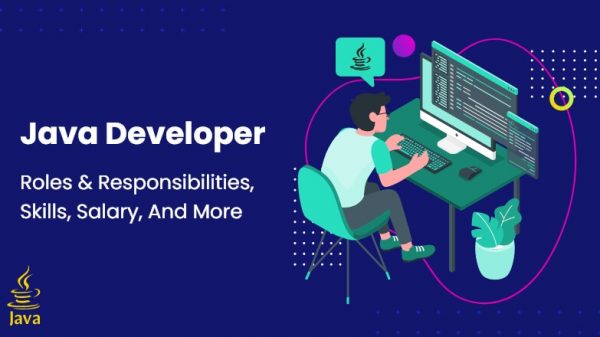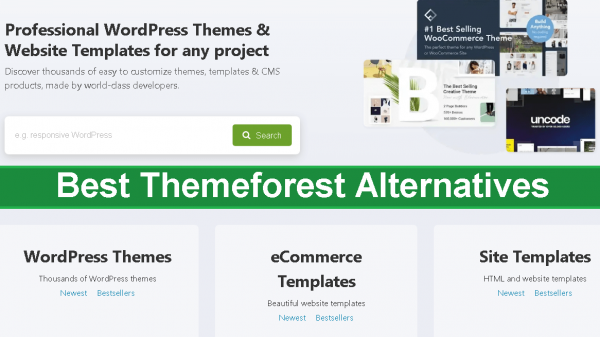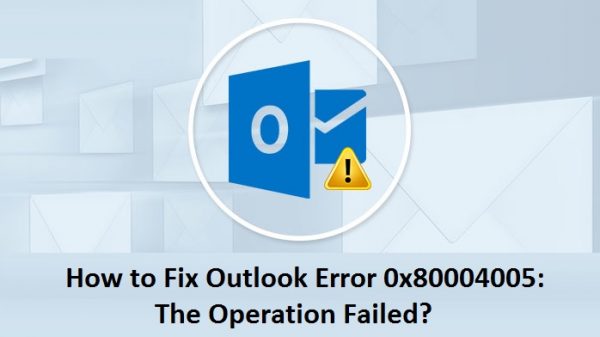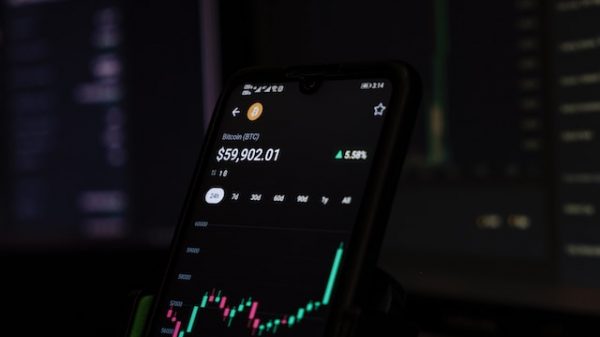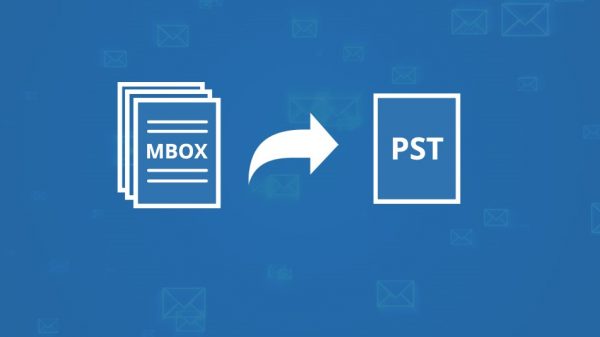What are the six essential steps of a mobile application development workflow? In this post, we will examine each of them in greater depth.
System application and in-app advertising have never been predicted to generate a substantial income. A $693 billion revenue for applications in 2021 is astoundingly fascinating. In addition, workplace mobility is expected to be valued at $510.39 billion by 2022.
Despite the fact that various businesses are attempting to capitalize on this trend, some are unaware of how to develop an app properly. The only way these growth projections can help your company succeed in a competitive market is if they are supported by meticulously maintained mobile application development phases.
This growth strategy will guarantee the success of your company’s application development endeavor, regardless of its size or complexity.
These are the phases of mobile application development:
1. Develop a Viable Strategy
The process of transforming your knowledge into a large program is the most time-consuming aspect of the mobile app development lifecycle. You may make this a larger part of the mobility protocol as a whole. It is essential to recognize that the objectives of each app vary, so the mobility technique must be tailored to each phase of the app development workflow.
Throughout this phase, you will:
- Determine who will use the application
- Consider the competition.
- The app’s intentions and goals must be determined.
- Assign a mobile platform to the developed application.
2. Analysis and Planning
At this point, the application concept begins to develop, after which the mission becomes a reality. The assessment and planning strategy begins with the definition of use cases and the collection of comprehensive functional codes.
Create a project plan once the application’s objectives have been outlined. This involves proposing and categorizing deliverable application milestones for feasible application requirements. Create a minimally viable product and emphasize it for the initial takeoff if you are short on time, resources, or funds.
Assessing the talent required for any application development project is a component of the policy for preparation. Typical mobile operating systems, such as iOS and Android, utilize a variety of advancement technology packages. If you want to create an application compatible with iOS or Android, you’ll need iOS or Android-specialized software developers on your team.
You must choose a name for the application. Similarly to domain names, mobile app names must be unique for each app in an app store. If possible, check every app store to ensure that the app name you’ve chosen is not already in use.
3. UI / UX Design
The UI/UX design consists of a user-friendly interface. The objective of the application is to create a completely mobile experience that is intuitive and easy to use.
The success of a system application is determined by how effectively prospective users perceive and employ the application’s characteristics. The goal of implementing UI/UX to enhance a mobile application is to create an appealing, straightforward, and easy-to-use user experience. The early stages of development can benefit from a well-designed interface.
Information Architecture & Business Processes
The very first step in a mobile-friendly, functional app development workflow is to determine what feedback an application will display to users, what data it will collect, how users will interact with the final product, and how people will navigate within the application.
Customers with diverse responsibilities and rights use enterprise mobile applications for businesses. These regulations must be included in the instructional portion of your application. Workflow diagrams help identify every possible interaction a client may have with an application.
Wireframes
Paper illustrations are a common starting point for mobile application designers. Wireframes are a visual representation type. Wireframes, also known as low-fidelity mockups, are semantic blueprints that graphically represent the functionality of your application.
Wireframes prioritize aesthetic value and customer experience over color frameworks and patterns. Wireframes are a simple and cost-effective method for developing app templates and iterating on them during the design evaluation process. When creating wireframes, consider the device-specific plan. It therefore makes no difference whether your application is utilized on an iPhone, iPad, or Android smartphone or tablet, as it enables simple and device-specific mobile usage.
Style Guide
These are dynamic papers that document the building criteria for an application, such as a company’s branding guidelines and navigation symbols.
The following are the styled guides:
- Specifying the application’s fonts
- The color scheme of the application
- How will the to-be-built application represent what an institution stood for?
A style management strategy facilitates application development planning. Developing style guides early in the app development process can help mobile application developers work more efficiently. If you follow the style guide, your software will have the same appearance. Utilize the iOS application design standards and Android application development protocols as part of your application’s architecture.
Mockups
A high-precision mockup is the definitive representation of an illustrated program’s design. As design evolves, the information architecture, workflow, and aesthetics of programmes will all change. Adobe Photoshop is the most popular application for creating high-quality mockups.
Prototype
To demonstrate the capabilities of a mobile application, stationary mockups are utilised. Using platforms such as Invision and Figma, it is possible to create a functional prototype. Prototypes are extremely useful for simulating the user experience and activities that will appear in the final product of a program. Prototyping requires time, but it is worthwhile because it allows you to test the design and functionality of your program early on. Prototypes are frequently used to identify changes.
Sometimes, during the wireframing phase, organizations choose to create prototypes when the technical specifications of an application are not well-defined. Alternatively, a focus group may be required to examine the planned features of the application.
4. App Development
Concurrently with the prototype, the foundational phases of app development remain crucial. Before you begin writing your code, ensure you have completed the following:
- Specification of the product backlog
- Choose a technology bundle
- Set application development objectives
- A typical mobile application development project comprises three major components:
- Server and back-end technology
- API(s)
- The application’s front-end
Server-Backend Technology
The back-end/server technology section includes the database and server-side components necessary for the mobile application’s enabling features. If you already own a back-end framework, you may need to make modifications to accommodate the anticipated mobile features.
API
API, which stands for Application Programming Interface, is a method by which an application communicates with a server or cloud storage.
Mobile App Front-End
The application’s front-end consists of the graphical components of software with which users interact. It is typically installed on the device, or at the very least, its icon is pinned to the applications directory or displayed on the home screen.
Now, for the backend, practically any web programming language and cloud storage can be utilised. You must choose a technology framework that is compatible with all mobile operating system platforms when designing mobile applications. To create iOS applications, you can use Objective-C or, preferably, Swift as the framework. While Java is the most popular programming language for developing Android applications, Kotlin is another efficient option to consider.
To develop a phone application, there are a wide range of codes and based approaches to choose from; the key is to select the most appropriate technology platform for your application.
Modern mobile releases have significantly accelerated the development of mobile technology. In addition, new mobile equipment is introduced periodically. Completing the development of smartphone applications on time and within budget requires skill, especially given the constant evolution of procedures and devices. If meeting demand quickly is your primary objective, use adaptable development strategies. This method can be used to distribute software that contains a fully functional program. By incorporating development phases into a flexible development plan, it is possible to replicate mobile applications.
Every stage of development is reviewed and approved by the software testing unit.
5. Examining
In order to ensure the application’s stability, performance, and security, quality assurance (QA) testing is an integral part of the mobile app development process. To ensure that your programme has been thoroughly evaluated, you must create test cases that cover every aspect of application testing.
Test cases, like use cases, aid in the development and testing of smartphone applications. By executing the testing procedure, monitoring repairs, and documenting test results, test samples are utilised to evaluate software quality. It is an excellent practise to include the quality management team in the computation and setup process. Having an understanding of your program‘s functionality goals and ideals will help you develop precise test cases.
Your application should pass the subsequent testing procedures in order to produce a great mobility result.
User Experience Evaluation
The actual result must match the user experience specified by the application development team, which is a significant development in the testing of smartphone applications. The visual effects, functionality, and interactivity of the application create a first impression on the user. Whether or not your software adheres to the initial design concepts has a significant impact on user adoption.
Functional Assessment
A well-designed application functions effectively for its success. It is difficult to predict the personality and usage patterns of end users.
The mode of the program should be evaluated by as many users as possible so that as many assessment scenarios as possible can be covered. If two different users attempt to perform the same function but receive different results, you may discover an unexpected problem. Two users may submit different information when filling out the same form, resulting in malfunctions.
The purpose of operating tests is to ensure that your application functions correctly for users. It is then divided into system tests (program technique as a whole) and modular tests (function-specific operations) (each function of the program works normally).
When developing mobile applications for iOS and Android, the function evaluation should include a comparison of the two application versions’ functionality.
Performance Assessment
For analyzing the performance of your application, you can experiment with a variety of quantitative parameters.
- How does your program respond effectively to user requests?
- How quickly does the program’s interface load?
- Does the software cause a memory leak or a battery drain?
- Does your software optimize your network bandwidth?
- Does your program consume more space than you believe?
Check the utilization of your program, APIs, and servers by simulating the maximum number of concurrent users, even if it meets basic performance criteria. Even when utilized rapidly, the program should be able to withstand the load and perform well.
Security Evaluation
Security is essential for mobile enterprise applications. Any possible vulnerability may be exploited by an attacker. Many businesses outsource their software’s security testing to third-party firms. The quality and development teams can take a few simple steps to ensure the security of their software.
If user authentication is required, both the device and the server must maintain session information. The system should end a user’s session if it has been inactive for an extended period of time (typically within 10 minutes for mobile applications). If your app saves user credentials on the device so that they can sign in again, ensure that you are utilising a reputable source. For instance, the keychain feature of the iOS application.
In order to prevent the loss of sensitive data, mobile application data entry formats must be thoroughly examined.
Device and System Evaluation
Occasionally, new mobile devices with contemporary hardware, firmware, and technology are listed. The mobile operating system is redesigned every few months.
HTC, Xiaomi, Samsung, and Motorola are among the mobile device manufacturers that have adopted the Android operating system and set up their devices because Android is open-source. These devices come in a variety of sizes and shapes.
Apple, in contrast, owns both the hardware and the operating system, resulting in a more demanding management environment. However, there are numerous iPhone and iPad (Apple iOS) devices available.
Testing during the development of a mobile application is distinct from testing during the development of a web application. Web applications can only be examined on Windows using the Chrome browser. To ensure that your mobile application functions properly for all users, you must test it on multiple mobile devices or simulators.
Due to the difficulty of testing all mobile devices, the ongoing maintenance costs, and the complication of managing mobile devices, the organization decided to develop corporate mobile applications for a single mobile platform (which often provide users with mobile devices). In general, businesses develop enterprise mobile applications for Apple’s iOS platform first, and only if necessary, for Google’s Android platform.
Testing is essential to a program’s long-term performance and is an integral part of the mobile application development process as a whole. Mobile application development requires meticulous planning of mobile tests.
During the testing phase, testers have multiple options for sharing application development and configuration. Testflight is the most common method for iOS apps, while email or wireless is the preferred method for Android apps.
6. Deployment & Support
Before launching a successfully constructed application, it must be submitted to and approved by application stores or shops, such as the Google Play Application Store and the Apple Application Store for Android and iOS, respectively. Before a newly developed mobile application can be released to the public, a developer account is required for the previously mentioned application stores.
Include the following in the metadata for an application’s publication in the store:
- A unique authentication title
- Personalized application description
- Class to which the app belongs
- Keywords for simple app recognition
- Icon for launching the application
- Screenshots are taken from the App Store
When an iOS application is uploaded to the Apple App Store, it undergoes an evaluation phase that can last from a few days to several weeks, depending on the application’s quality and adherence to Apple’s iOS software guidelines. Apple requires a trial user profile as part of the review process, especially if your application requires users to log in.
Android applications are published to the Android mobile application market within a few hours of submission without undergoing an evaluation phase.
Monitor your app’s usage with mobile analytics systems and measure Key Performance Indicators (KPIs) to gauge its success once it’s available in app stores. Regularly review crash reports and other user-reported issues.
Encourage clients to provide feedback and suggestions regarding your application. To retain the interest of customers who use your application, it will be essential to provide end-user support and release frequent feature updates. In contrast to web applications, which can make patch releases immediately available to app users, phone application updates must adhere to the same submission and review process as the original submission. Additionally, you must keep up with technological development and regularly update your application to support new mobile devices and operating systems.
Final thoughts
Designing an application is an ongoing process that will continue after the initial release as user feedback is gathered and new features are added. Hopefully, you now have a better understanding of the mobile app development workflow and its various stages, ranging from selecting a partner and conducting Product Discovery to app delivery and maintenance. Every developed mobile application follows the same development lifecycle. When designing mobile enterprise applications, adhere to our methodical approach.






